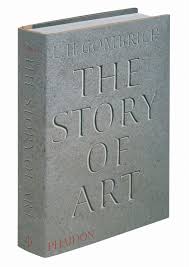This is the perfect city to visit to appreciate centuries of history.
(An article I wrote for Culture Calling) 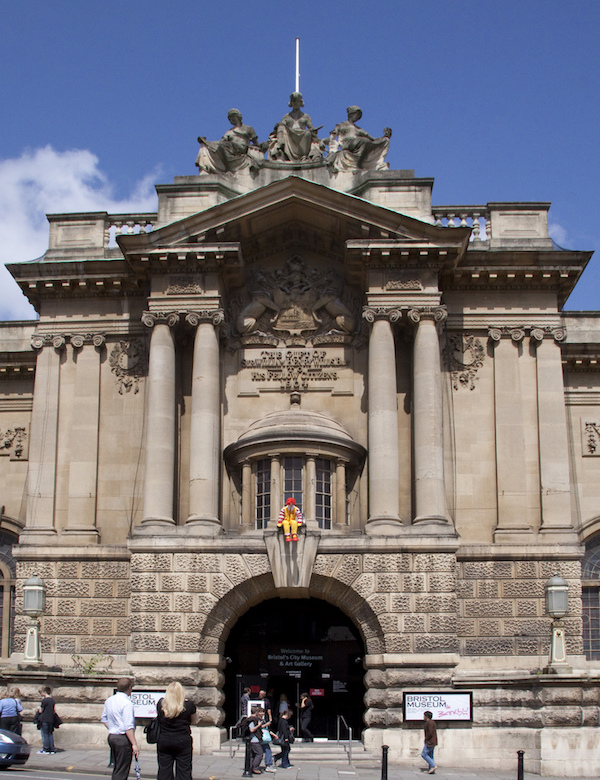 |
| Image credit: Tony Hisgett, Bristol Museum and Art Gallery
Once the second UK city only to London, Bristol has a complex cultural heritage stretching from the slave trade, to Brunel’s inventions, to the vibrant street art of recent decades. If you are a lover of museums, this is the perfect city to visit to appreciate centuries of history. From science centres to stately homes, there is so much to explore that even the most hardened museum buff will be enthralled by the city’s cultural offerings.
|
Bristol Museum and Art Gallery
This is perhaps the most obvious choice, as the name itself would imply. Although it may be a cliché to start with the city’s main museum, the Bristol Museum and Art Gallery actually has a very impressive collection of art and artefacts, and is well worth a visit. Entering the beautiful neoclassical building designed by Sir Charles Robert Cockerell, you will be instantly struck by the atmosphere of the museum. With a Bristol biplane replica hanging overhead, Assyrian statues to one side and a Banksy sculpture to the other, there is clearly a fascinating and eclectic array of exhibits in store. The ground floor covers archaeological objects from Egypt and Assyria, while the first floor holds geological wonders, sparkling minerals and dinosaur skeletons. Perhaps the most surprising element is the art collection on the second floor. Impressively large in scope, these galleries feature pieces from masters such as Gainsborough and Constable. If you’re looking to cover a lot of historical and geographical ground, the Bristol Museum and Art Gallery should really be your first stop.
| Image Credit: Wendy North, Bristol Museum entrance hall |
M Shed
If you’ve taken a look at the historical exhibits in the Bristol Museum and are still raring for more museum time, it’s just a short walk down Park Street to get to M Shed, the cultural centre of Bristol. Built on the site of the former Industrial Museum in 2011, M Shed is a new and exciting take on displaying heritage. Occupying a modern building, M Shed covers three main floors: Bristol Places, Bristol People and Bristol Life, each taking a different angle through which to tell the story of the city, through artefacts, paintings, videos and resident testimonies. Whereas many heritage sites tend to avoid provocative issues, M Shed confronts the city’s complex dynamics head on, with exhibitions on Bristol’s role in the slave trade, the Somali community living in Bristol and spotlighting some of the more run-down areas of Bristol which are not usually represented in mainstream coverage of the city. There are also fascinating tours available around the storeroom, which holds industrial, maritime and personal objects from the city’s past. Volunteers have also been working on restoring the historical cranes on Bristol’s docks. For those who wish to delve deeper into the city’s cultural heritage and contemporary society, this is the modern museum for you.
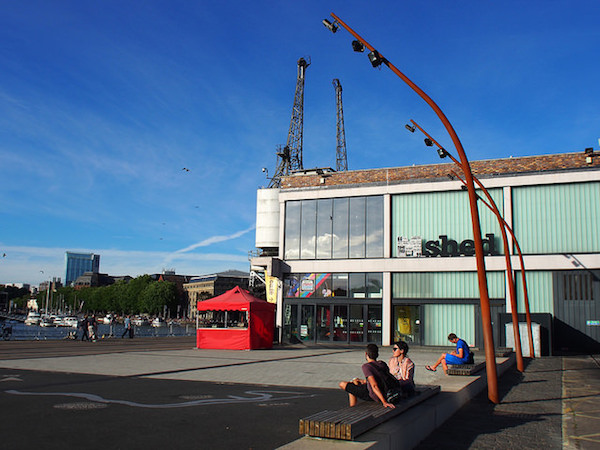
Image Credit: Heather Cowper, M Shed
M Shed is located at Princes Wharf, Wapping Rd, Bristol BS1 4RN.
@Bristol
No, there isn’t a typo on the road signs, this is the name (pronounced ‘At-Bristol’) of the go-to science centre in Bristol. Rather than being historical, like many of the other institutions on this list, @Bristol focuses on interactive science and technology. With regular new additions to the exhibits, which include the UK’s only 3D Planetarium and an indoor greenhouse, there is a clear ambition to inspire curiosity and creativity, particularly among younger visitors. There are talks, live demonstrations and events allowing for more in-depth exploration of the exhibits and the science behind them. Almost everything can be handled or moved, meaning it is the ideal destination to delight a new generation of museum lovers. There are also after-hours, hands-on talks for adults, so there really is something for everyone. Located right by the harbour side, it is also surrounded by some great restaurants to really make a day out of it.
@Bristol is located at Anchor Rd, Harbourside, Bristol BS1 5DB.
Red Lodge Museum
Red Lodge Museum is quite an unusual find, given that it is neither a stately home nor a traditional museum. It is more a mix of both: a ‘historic house museum’. The original building was Tudor, and the museum traces the changes in the inhabitants of the building from the 1580s through to the early nineteenth century. Three of the rooms are displayed exactly as they would have appeared in the sixteenth century complete with the oak furniture of John Young, a merchant who had the original lodge built to show other merchants his coveted portraits and exotic finds. These rooms include the last complete Elizabethan room in Bristol. The Youngs also had eight ornamental gardens, and a beautiful Elizabethan Knot Garden still remains today. In the 1730s, the lodge became a family home and fashionable extensions were added, doubling the building in size. In 1854, the lodge went on to become a Victorian school, capturing an interesting slice of history where reformer Mary Carpenter hoped to nurture the nation’s poor girls rather than leave them to the workhouses and prisons. This rather strange building acts as a walk through history, offering rare snapshots of various moments in Bristol’s heritage.
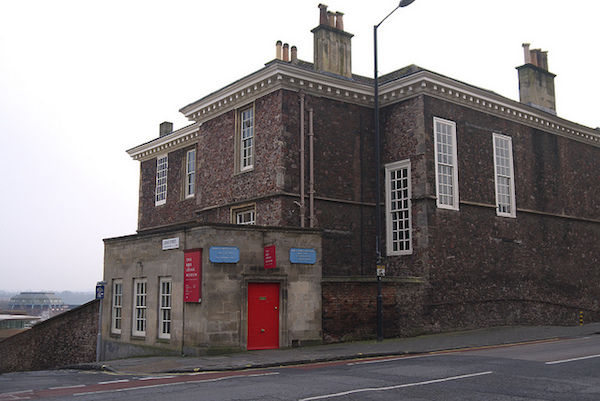
Image Credit: Sam Saunders, Red Lodge Museum
Red Lodge Museum is located at Park Row, Bristol BS1 5LJ.
Brunel’s SS Great Britain
The SS Great Britain represents such a key moment in Bristol’s history that any museum lover worth their stripes would surely hate to miss out on a visit to this award-winning attraction. Designed by Isambard Kingdom Brunel, the steamship was the longest passenger ship in the world from 1845 to 1854, and the first iron steamer to cross the Atlantic. Yet this is not just a history lesson; the ship itself and the area surrounding it have been renovated to allow an immersive experience. The Dockyard Museum recreates how the Bristol docks would have been, complete with costumed models and fake horse-drawn carriages. Although the ship no longer sits in the water, recorded sounds of wood creaking in the river contribute to the theatre of the harbour side. This is beautifully done, and immediately sets the scene for the ship that ‘changed the world.’ You are then able to board the ship and get up close to the historical engine and propeller. As such a key symbol on Bristol’s landscape, the ship is often involved in events and festivals throughout the year, and is really a must-see to round off your museum experience in Bristol.
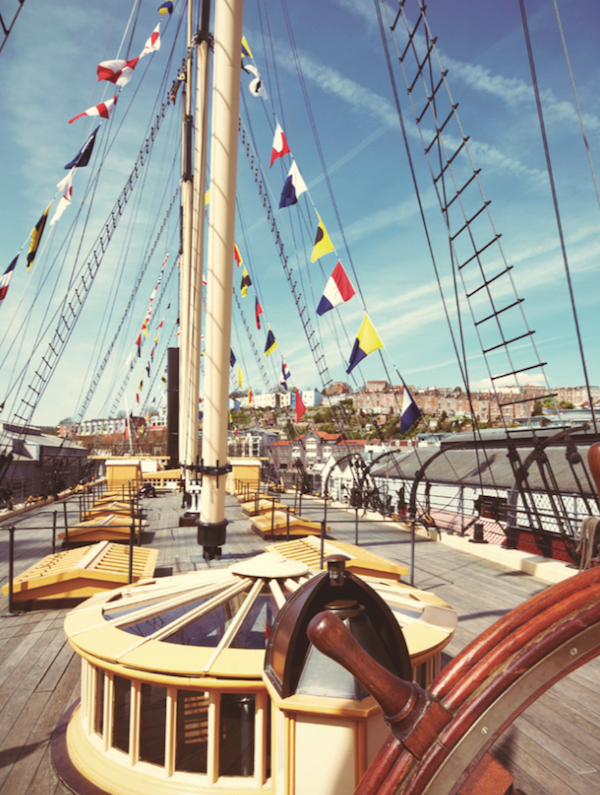
Image Credit: SS Great Britain, weather deck
SS Great Britain is located at Great Western Dockyard, Gas Ferry Rd, Bristol BS1 6TY.
Once the second UK city only to London, Bristol has a complex cultural heritage stretching from the slave trade, to Brunel’s inventions, to the vibrant street art of recent decades. If you are a lover of museums, this is the perfect city to visit to appreciate centuries of history. From science centres to stately homes, there is so much to explore that even the most hardened museum buff will be enthralled by the city’s cultural offerings.














